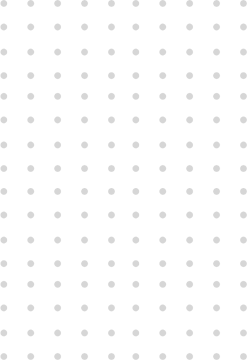Böbrek Sağlığı ve Hastalıkları
What is Proteinuria?


Approach to the Patient with Proteinuria
Total urinary protein excretion in a healthy adult is less than 150 mg/dl daily. proteinuria; It is defined as the detection of protein excretion over 150 mg/day in 24-hour urine. Proteinuria is an independent risk factor for renal and cardiovascular diseases. Determining the amount of protein in the urine plays an important role in detecting kidney disease, confirming the diagnosis, evaluating the efficacy of treatment and determining the prognosis. Although proteinuria is a manifestation of the underlying disease, it is an independent risk factor that can cause renal injury. The effect of proteinuria on renal injury is related to an increase in existing inflammation. Studies have shown that the decrease in glomerular filtration rate (GFR) slows down as a result of treatments that reduce the amount of proteinuria.
In addition to urinalysis, a detailed anamnesis and the presence of a systemic disease such as DM, vascular diseases, hypertension, and drug history that may cause proteinuria should be questioned in patients who are examined for proteinuria. Most patients with proteinuria are asymptomatic and the presence of proteinuria is detected incidentally. The amount of protein excreted in a 24-hour period in a patient with proteinuria should be calculated by collecting 24-hour urine or by the protein/creatinine ratio in a spot urine sample.

Types of Proteinuria
Microalbuminuria: There is an albumin excretion that is above the normal level but cannot be detected by dipstick. 20-200 µg/min (mg/L) (1,2) or 30-300 mg/day (9) albumin or albumin/creatinine ratio in females >= 3.5 mg/mmol (32 mg/g) in urine sample, > =2.5 mg/mmol (23 mg/g). Microalbuminuria is seen in 4-15% of patients with diabetes for more than 5 years. It appears to be the earliest and possibly reversible indicator of glomerular damage in type 1 diabetes mellitus, nephropathy. It is associated with a 5-6-fold increased cardiovascular mortality in diabetic patients and is common in essential hypertension, apart from diabetes mellitus. It is considered to be an indicator of cardiovascular risk. There is no clinical manifestation of microalbuminuria, but if no precautions are taken, “clinical nephropathy” develops in half of the patients in this period within 3-5 years. Other diseases with microalbuminuria include hypertension, pregnancy (preeclampsia, maternal morbidity, fetal mortality), non-diabetic renal disease, urinary tract infection, heavy exercise, and heart failure.
It is important under which conditions proteinuria occurs and whether it is continuous or not. Clinically, proteinuria can occur in three ways.
Transient (transient) proteinuria: It is the most common form of proteinuria. It is defined as proteinuria detected in a urine sample but not detected in the next measurement. It is divided into 3 groups as functional, intermittent and orthostatic proteinuria.
Functional proteinuria: Exercise, fever, congestive heart failure, cold exposure may cause a transient increase in protein excretion. It is thought that glomerular permeability change due to increase in norepinephrine or angiotensin-II has a role in its pathophysiology.
Intermittent proteinuria: It is the type of proteinuria in which attacks are the threshold of normal periods in between. Although they generally have a good prognosis, these patients should be followed up for hypertension or other causes. Transient proteinuria may also occur during pregnancy, but it definitely requires further investigation.
Orthostatic (postural) proteinuria: It is a form of proteinuria seen in 2-5% of young adults. Generally, a protein excretion of less than 1 g/day is observed. Proteinuria develops due to lordotic position resulting in renal congestion and ischemia. Increased protein excretion while standing is defined as the absence of proteinuria in the supine position. While the patient’s bladder is empty, the first urine sample in the morning should be taken, and after two hours of walking and standing, the urine sample should be taken again and the protein measurement should be checked in both samples. While the protein is negative in the first sample, it is diagnosed as positive in the second. Orthostatic proteinuria usually has a benign course.
Persistent proteinuria:
It is characterized by the continuous detection of proteinuria. It can be an indicator of any underlying systemic or renal disease and is a condition that requires close follow-up. The incidence of proteinuria is higher in the group of patients over 60 years of age compared to those under 60 years of age.
Proteinurias; It is examined under 4 sub-titles according to the formation mechanism. There are 4 main types of proteinuria: glomerular proteinuria, tubular proteinuria, overflow proteinuria and postrenal proteinuria. Only glomerular proteinuria can be diagnosed with urine sticks. The most common cause of persistent proteinuria encountered in the clinic is glomerular proteinuria.
a-Glomerular proteinuria: In glomerular diseases, it is characterized by increased filtration of macromolecules such as albumin against the glomerular capillary wall. It is associated with diabetic nephropathy and other glomerular diseases. The more prominent conditions, orthostatic and exercise-associated proteinuria, are examined in this category. Tubular function is normal and small plasma proteins are largely reabsorbed. As long as glomerular selectivity is maintained, large molecules do not appear in the urine. When these proteins appear in the urine, selectivity is reduced, indicating greater glomerular damage. Hematuria, erythrocyte casts and lipiduria accompanying proteinuria reaching nephrotic limits from time to time are urinary findings suggesting a glomerular disease in the patient.
b- Tubular proteinuria: It occurs due to urinary excretion of low molecular weight proteins such as polypeptides, beta-2 microglobulin, amino acids, retinol binding protein, light chains of immunoglobulins, which are released as a result of albumin breakdown. The amount of proteinuria is usually less than 2 g/day. In healthy individuals, most of these proteins are reabsorbed from the proximal tubules after filtering through the glomeruli. Proximal tubule reabsorption is impaired in tubulointerstitial disease and some primary glomerular diseases, resulting in low molecular weight proteins in the urine. Tubulointerstitial proteinuria may turn into glomerular proteinuria over time due to nephron loss due to the underlying disease. Urine sticks are not useful in diagnosis because they do not recognize low molecular weight proteins.
Overflow proteinuria: It occurs due to the overproduction of low molecular weight proteins such as light chains seen in multiple myeloma, lysozyme in acute myelomonocytic leukemia, myoglobin in muscle traumas and free hemoglobin in intravascular hemolysis in an amount exceeding the reabsorption capacity of the nephron.
Postrenal proteinuria: Reflects protein originating from the urinary tract below the kidneys and is usually due to inflammation, bleeding, and malignancy. Diagnosis can be made by microscopic examination of urine sediment for inflammatory, blood and malignant cells.
Protein Measurement Methods in Urine
In the determination of proteinuria, two main semi-quantitative methods are used: standard urine dipsitick and sulfosalicylic acid method. These are screening tests and should be confirmed by different methods in case of positivity.
Quantitative measurement:
It is clinically important to determine the amount of proteinuria in patients with persistent proteinuria by semi-quantitative methods or in acute-chronic kidney diseases. It is important to determine the amount of proteinuria. Most patients have 1–2 grams of benign isolated proteinuria per day. The degree of proteinuria is of prognostic importance in patients with primary and secondary glomerular disease. High proteinuria causes rapid progression in renal failure. The amount of proteinuria is used to evaluate the response to treatment. Protein excretion in the urine varies between 100% and 500% during the day. Causes affecting urinary protein excretion during the day include daily fluid intake and excretion, urine output rate, diet and rest. It has been shown that protein and creatinine excretion are constant during the day while the GFR rate is constant. Problems arise during sample collection due to inaccuracy in the way of collecting urine of the patients, difference in urine amount and concentration, difficulty in patient compliance, and laborious and expensive collection of urine for 24 hours(17). has come to the fore. Since instant urine albumin measurement may give false results, it is recommended to measure urine creatinine and use its ratio to albumin. Urinary creatinine excretion of women is less due to their muscle mass, and cut-off values for A/C ratio are different. However, some researchers have argued that urinary osmolarity can be used instead of creatinine in the ratio as an alternative to the P/K value in instant urine. In some studies, it has been determined that the variability in urinary albumin and protein excretion during the day is very low when compared with creatinine or urine osmolarity. First or second morning urine is recommended for A/C and P/C ratio measurement. In the measurement of A/K and P/K in urine, protein and albumin are used as mg/dl and creatinine as mg/dl, this ratio shows the daily proteinuria and albuminuria in grams.
